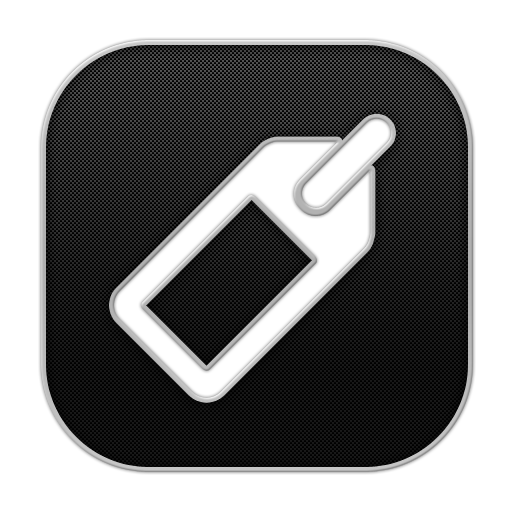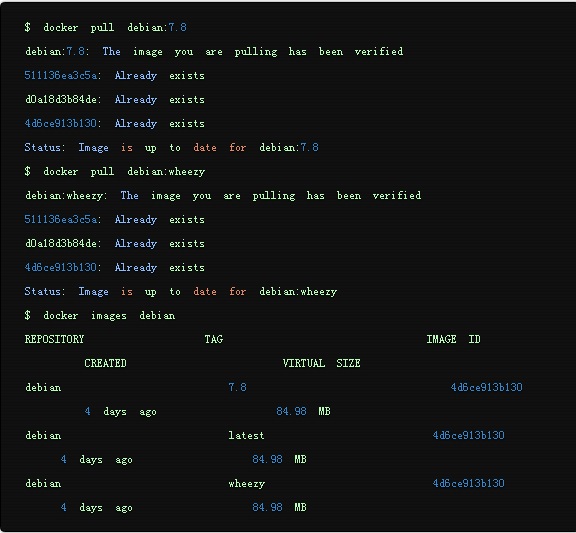What is the role of latest tag in Docker?
In Docker, the most easily misunderstood part should be the latest label. The confusion is mostly due to the name, as the literal meaning does not convey its true meaning. In this article, let’s learn what the latest tag really does and how to use it correctly.

There are usually two ways to tag the image: use the docker tag command or use -t to pass parameters when executing docker build. In both cases, the parameter is usually of the form repository_name:tag_name, for example: docker tag myrepo:mytag. If the repository is uploaded to Docker Hub, the name of the repository will be prefixed by the Docker Hub username and a slash, for example: amouat/myrepo:mytag. If no parameters in the tag part are added, for example: docker tag myrepo:1.0 myrepo, Docker will automatically give it the latest tag. You may already be familiar with the above content, but in fact, it only contains this content, and there is nothing magical about it.
You cannot think that this is the latest image in the resource library just because the image label is latest. Only if the owner of this resource library agrees, the image with the latest label must be the latest image. For example, I can easily change an outdated image into an image with the latest tag, for example:

The image with the latest tag here is the same as the image of version 0.9, which is two weeks ago, but the image of 1.0 is one minute ago.
Why this label confuses many people, it is actually easier to understand. ‘just pull the latest image’ does this sentence mean to get the image with the latest tag or to get the latest image? Are these two the same? Are they the latest images in the repository? Is it the latest stable version image or the latest development version image?
What's worse is that many people seem to think that the latest label will automatically update, which means that if I get an image with the latest label, Docker will check whether it is the latest version before each run. This will never happen, and like other tags, you need to manually decide whether Docker will get the latest version of the image.
The confusion doesn’t stop there. What happens if I docker pull an image from the repository without specifying a tag? If you think it will get all the images, you are wrong, it will only get the one with the latest label. If you need to obtain all images, you need to add the -a flag. What will happen if you perform a pull operation on the resource library without the latest tag? As follows:
$ docker pull amouat/myrepo Pulling repository amouat/myrepo 2015/01/21 12:04:06 Tag latest not found in repository amouat/myrepo
Unexpectedly, Docker gave an error message. But I don't think you know what's going on. One of the more annoying things is that the latest tag hides other tags. Suppose you want to download the debian image with the latest tag. Which version is it?
$ docker images debian REPOSITORY TAG IMAGE ID CREATED VIRTUAL SIZE debian latest 4d6ce913b130 4 days ago 84.98 MB
Um, I don’t know. In fact it is version 7.8 wheezy.

I think Docker should put all the tags when downloading the image, but I don't know why it doesn't do this. What happens now is that users can have different versions of the same image because they are labeled on the server. For example: If both wheezy and latest are updated on the Hub, and I only get the updated wheezy version debian, then although they can be distinguished on the Hub, my wheezy tag will be smaller than the local version of the latest tag. new.
The above only covers most of the semantics of latest and the common misunderstandings it causes. How can this situation be improved? Personally, I think the latest tag can be canceled and replaced with a word closer to its literal meaning, such as default. I'd also like to see some work on improving the way tags are created, such as updating all tags for an image at the same time. At the same time, I also strongly recommend that repository administrators be wary of the latest tag and abandon it completely.
The above is the detailed content of What is the role of latest tag in Docker?. For more information, please follow other related articles on the PHP Chinese website!

Hot AI Tools

Undresser.AI Undress
AI-powered app for creating realistic nude photos

AI Clothes Remover
Online AI tool for removing clothes from photos.

Undress AI Tool
Undress images for free

Clothoff.io
AI clothes remover

Video Face Swap
Swap faces in any video effortlessly with our completely free AI face swap tool!

Hot Article

Hot Tools

Notepad++7.3.1
Easy-to-use and free code editor

SublimeText3 Chinese version
Chinese version, very easy to use

Zend Studio 13.0.1
Powerful PHP integrated development environment

Dreamweaver CS6
Visual web development tools

SublimeText3 Mac version
God-level code editing software (SublimeText3)

Hot Topics
 1386
1386
 52
52
 How to use docker desktop
Apr 15, 2025 am 11:45 AM
How to use docker desktop
Apr 15, 2025 am 11:45 AM
How to use Docker Desktop? Docker Desktop is a tool for running Docker containers on local machines. The steps to use include: 1. Install Docker Desktop; 2. Start Docker Desktop; 3. Create Docker image (using Dockerfile); 4. Build Docker image (using docker build); 5. Run Docker container (using docker run).
 Difference between centos and ubuntu
Apr 14, 2025 pm 09:09 PM
Difference between centos and ubuntu
Apr 14, 2025 pm 09:09 PM
The key differences between CentOS and Ubuntu are: origin (CentOS originates from Red Hat, for enterprises; Ubuntu originates from Debian, for individuals), package management (CentOS uses yum, focusing on stability; Ubuntu uses apt, for high update frequency), support cycle (CentOS provides 10 years of support, Ubuntu provides 5 years of LTS support), community support (CentOS focuses on stability, Ubuntu provides a wide range of tutorials and documents), uses (CentOS is biased towards servers, Ubuntu is suitable for servers and desktops), other differences include installation simplicity (CentOS is thin)
 What to do if the docker image fails
Apr 15, 2025 am 11:21 AM
What to do if the docker image fails
Apr 15, 2025 am 11:21 AM
Troubleshooting steps for failed Docker image build: Check Dockerfile syntax and dependency version. Check if the build context contains the required source code and dependencies. View the build log for error details. Use the --target option to build a hierarchical phase to identify failure points. Make sure to use the latest version of Docker engine. Build the image with --t [image-name]:debug mode to debug the problem. Check disk space and make sure it is sufficient. Disable SELinux to prevent interference with the build process. Ask community platforms for help, provide Dockerfiles and build log descriptions for more specific suggestions.
 How to view the docker process
Apr 15, 2025 am 11:48 AM
How to view the docker process
Apr 15, 2025 am 11:48 AM
Docker process viewing method: 1. Docker CLI command: docker ps; 2. Systemd CLI command: systemctl status docker; 3. Docker Compose CLI command: docker-compose ps; 4. Process Explorer (Windows); 5. /proc directory (Linux).
 Detailed explanation of docker principle
Apr 14, 2025 pm 11:57 PM
Detailed explanation of docker principle
Apr 14, 2025 pm 11:57 PM
Docker uses Linux kernel features to provide an efficient and isolated application running environment. Its working principle is as follows: 1. The mirror is used as a read-only template, which contains everything you need to run the application; 2. The Union File System (UnionFS) stacks multiple file systems, only storing the differences, saving space and speeding up; 3. The daemon manages the mirrors and containers, and the client uses them for interaction; 4. Namespaces and cgroups implement container isolation and resource limitations; 5. Multiple network modes support container interconnection. Only by understanding these core concepts can you better utilize Docker.
 What computer configuration is required for vscode
Apr 15, 2025 pm 09:48 PM
What computer configuration is required for vscode
Apr 15, 2025 pm 09:48 PM
VS Code system requirements: Operating system: Windows 10 and above, macOS 10.12 and above, Linux distribution processor: minimum 1.6 GHz, recommended 2.0 GHz and above memory: minimum 512 MB, recommended 4 GB and above storage space: minimum 250 MB, recommended 1 GB and above other requirements: stable network connection, Xorg/Wayland (Linux)
 How to switch Chinese mode with vscode
Apr 15, 2025 pm 11:39 PM
How to switch Chinese mode with vscode
Apr 15, 2025 pm 11:39 PM
VS Code To switch Chinese mode: Open the settings interface (Windows/Linux: Ctrl, macOS: Cmd,) Search for "Editor: Language" settings Select "Chinese" in the drop-down menu Save settings and restart VS Code
 What is vscode What is vscode for?
Apr 15, 2025 pm 06:45 PM
What is vscode What is vscode for?
Apr 15, 2025 pm 06:45 PM
VS Code is the full name Visual Studio Code, which is a free and open source cross-platform code editor and development environment developed by Microsoft. It supports a wide range of programming languages and provides syntax highlighting, code automatic completion, code snippets and smart prompts to improve development efficiency. Through a rich extension ecosystem, users can add extensions to specific needs and languages, such as debuggers, code formatting tools, and Git integrations. VS Code also includes an intuitive debugger that helps quickly find and resolve bugs in your code.




